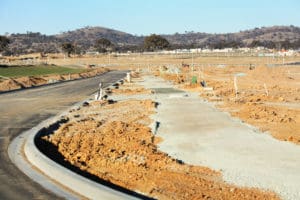Communities throughout Oregon develop specific land use regulations to best meet the needs of their areas. These plans and accompanying rules are created through a process that involves collecting data, community member feedback, long-range forecasting, and decision-making. By developing a strategic vision for a community, planning commission members can set goals that inform proper rules and restrictions to achieve desired outcomes. Understanding all the types of land use regulations in Oregon may seem complex, but this is one way our experienced team can help you get started developing your property.
 What types of land use regulations in Oregon are found within community plans?
What types of land use regulations in Oregon are found within community plans?
Most commonly, zoning and subdivision regulations create comprehensive community development plans. Both of these impact residential and commercial development throughout the state. Some communities combine these as a single “land development code.”
What is zoning?
Zoning applies land use labels to specific tracts of land. On the highest level, these are divided into residential, commercial, or exclusive farm use. Within each of those three categories, there are layers of subcategories that, more specifically, what the land can and can’t be used for. For example, zoning describes permitted uses along with criteria and standards for each use, including lot size, setbacks, and parking.
Community development planners often recognize the need to have flexibility, however. Provisions often allow for variances, nonconforming uses, conditional uses, design review, and other special situations. An application and a hearing may be required to qualify for any of those provisions.
What are subdivision regulations?
Subdivision regulations limit how a parcel of land can be divided into smaller units and sold to individual buyers. The regulations usually start with the design and layout of the specific site, including roads, utility easements, public areas, etc. It is common for stipulations to be added when a land developer seeks approval for subdividing a parcel of land. For example, the planning commission may require roads to be paved and include sidewalks or for the developer to make other improvements to the property.
What non-regulatory methods are used to help achieve land use goals in Oregon?
Along with zoning and subdivision regulations, planning commissioners may provide incentives to residents or businesses to develop property in a way that supports community development goals. For example, these goals may include incentive programs for economic development, capital improvement programs, and low-income housing programs.
We can help you better understand land use regulations in Oregon.
If you’re interested in developing your property or purchasing a new tract of land, contact the professionals at Richard Stevens & Associates. We assist our clients with all work related to rural and urban land use planning permits and zoning laws. Our team will work to understand your needs and help you understand the legal processes involved with reconfiguring the classification of your property to achieve your goals.

 What types of land use regulations in Oregon are found within community plans?
What types of land use regulations in Oregon are found within community plans?